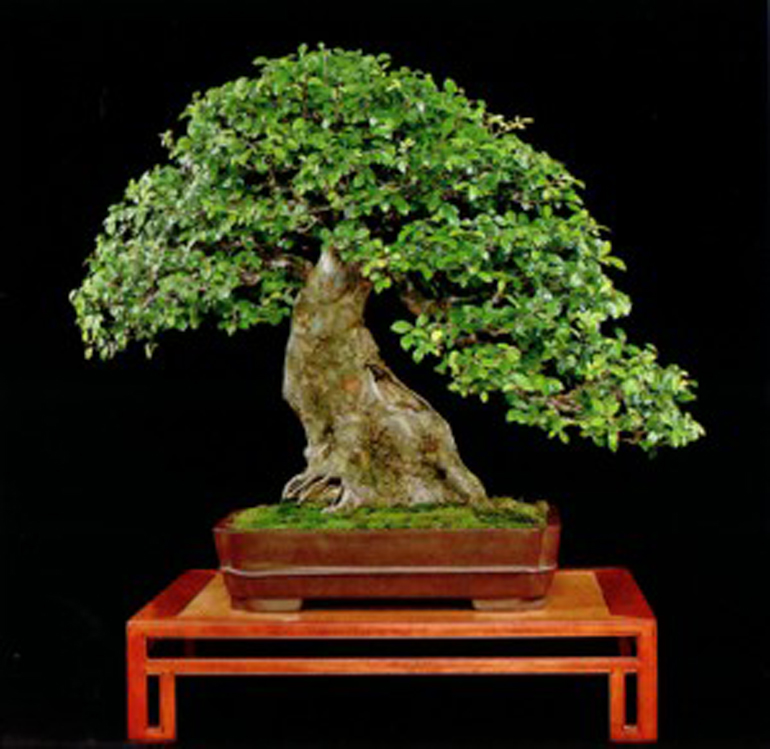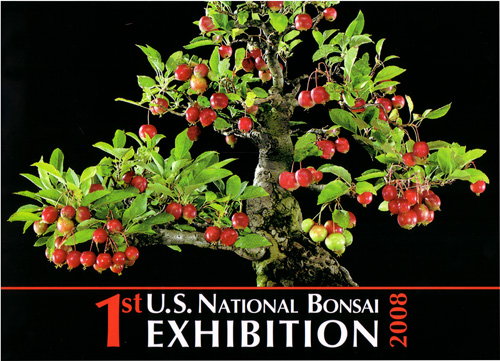
You can see the large scar from the first cut on this powerful old Chinese elm (Ulmus parviflora). If you follow the trunk up a ways, you can see the change of direction where the second cut took place, though you can't see a scar from this view. This tree appears in the 1st U.S. National Bonsai Exhibition Album.* It was started from a large collected tree in China. The owner/artist is Melvyn Goldstein. The fuzzy image is due to enlarging to fit our newer format.
It’s full tilt spring around here now. Digging and potting season in all its intensity. So, for the sake of expediency, we’re dipping into our archives once again. This one is from May 2009, Bark’s infancy.
Many deciduous trees are started in the field and developed using the clip-and-grow technique. The result is a heavy trunked tree with gentle curves, often in a more or less S shape. You can see this basic shape in the Chinese elm above. A variation of this S curve often shows up in pines and other conifers as well, though it is usually created by other means (trimming and wiring), as conifers don’t usually take as well to clip-and-grow.
These simple illustrations of the clip and grow technique are from a website called The Bonsai Primer. The left image shows the first cut, the next one shows the second cut, and so forth. If you go to the comments in our previous field growing post, Brian Van Fleet gives an excellent description of exactly what these illustrations are all about.

*The cover of the 2008 album (out of print). The 3rd Album is currently discounted at Stone Lantern & the 4th Album is coming soon.